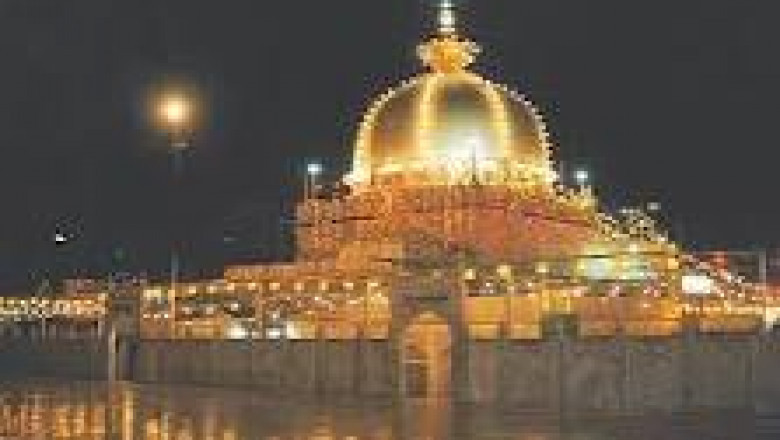views
Nestled in the heart of Rajasthan, India, Ajmer Sharif is a place of profound spiritual significance and historical grandeur. This revered shrine is the final resting place of Khwaja Moinuddin Chishti, one of the most celebrated Sufi saints in the Islamic world. Known as "Gharib Nawaz" (Benefactor of the Poor), his teachings and legacy transcend religious boundaries, attracting millions of devotees from all walks of life.
A Glimpse into History
Khwaja Moinuddin Chishti arrived in Ajmer during the 12th century. His teachings of love, humility, and service resonated deeply with the masses, earning him a place of high regard in Indian spiritual history. Following his passing in 1236 CE, a magnificent dargah (shrine) was built in his honor. Over the centuries, this shrine has become a symbol of spiritual unity and communal harmony.
The Architecture of the Dargah
The Ajmer Sharif Dargah is a stunning blend of Indo-Islamic architecture. The complex comprises several components:
- Nizam Gate: The grand entrance, built by the Nizam of Hyderabad, sets the tone for the sanctity of the shrine.
- Shahjahani Gate: A masterpiece constructed by Emperor Shah Jahan, reflecting Mughal architectural finesse.
- Buland Darwaza: This towering gateway symbolizes the grandeur and reverence of the shrine.
- Tomb of Khwaja Sahib: The heart of the dargah, the tomb is an intricately designed structure with a domed roof, enclosed in a silver railing. Devotees often tie threads here, symbolizing their prayers and wishes.
Pilgrimage and Rituals
Ajmer Sharif is a melting pot of faiths, where people from diverse religious backgrounds come to seek blessings. The most prominent time to visit is during the annual Urs festival, commemorating the death anniversary of Khwaja Moinuddin Chishti. This six-day event is marked by qawwalis (Sufi devotional music), recitations, and the offering of chadars (decorative cloth) at the saint's tomb.
Other rituals include:
- Langar: Free meals served to visitors, symbolizing the saint's teachings of charity and service.
- Qawwalis: Soulful renditions that convey the essence of Sufi philosophy.
- Prayer Offerings: Devotees offer flowers, incense, and sweets at the tomb.
Ajmer Beyond the Shrine
While Ajmer Sharif is the city's spiritual heart, Ajmer has more to offer:
- Ana Sagar Lake: A serene spot for relaxation and reflection.
- Adhai Din Ka Jhonpra: An ancient mosque with intricate carvings, believed to have been constructed in two and a half days.
- Pushkar: Just a short drive away, this town is famous for the Brahma Temple and the sacred Pushkar Lake.
A Symbol of Unity
Ajmer Sharif stands as a testament to India's rich cultural tapestry and the enduring legacy of Khwaja Moinuddin Chishti. The shrine's universal appeal lies in its message of love, compassion, and harmony. For those seeking solace, spiritual rejuvenation, or a deeper connection with humanity, Ajmer Sharif remains a guiding light.
Whether you're a pilgrim or a traveler, a visit to Ajmer Sharif is a profound experience, offering a glimpse into the depths of faith and the power of unity amidst diversity.






















Comments
0 comment